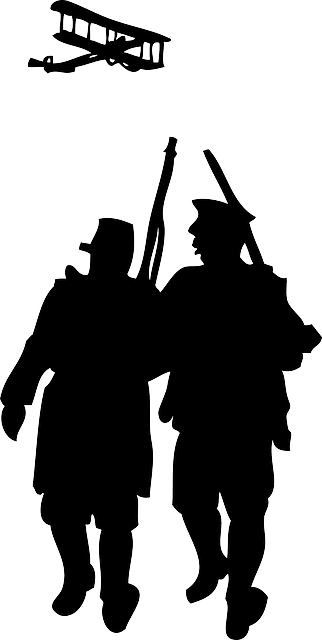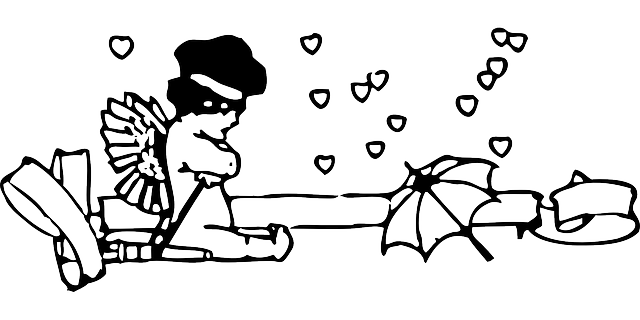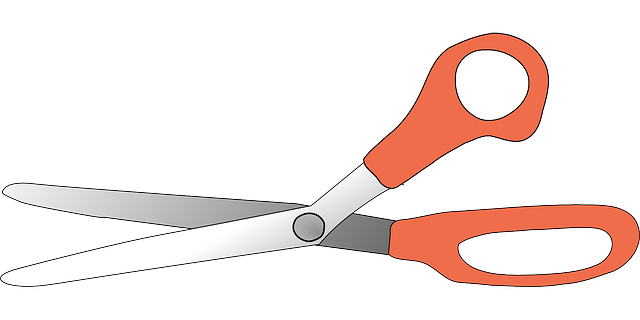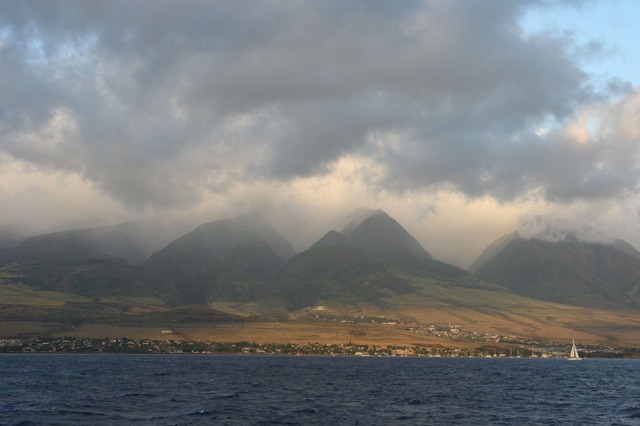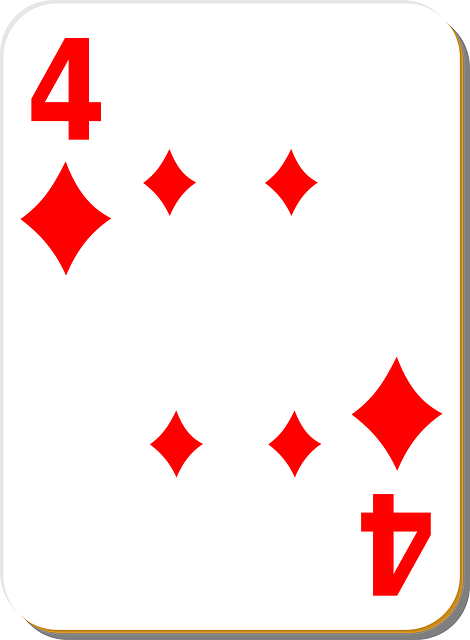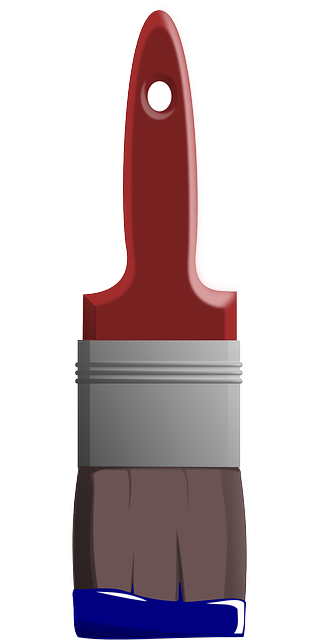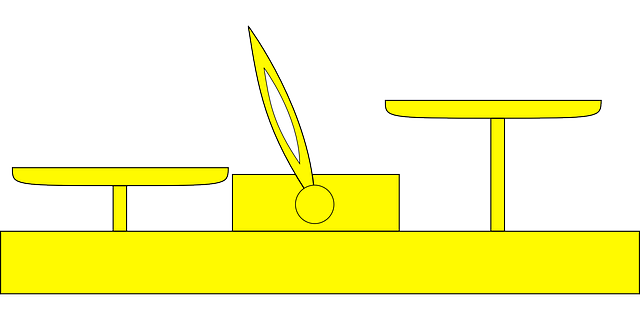ثورة فلسطين 1834
| ||||||||||||||||||||||||||||||
| نطقب:Campaignbox Muhammad Ali of Egypt | ||||||||||||||||||||||||||||||
ثورة الفلاحين was a rebellion against Egyptian conscription and taxation policies in Palestine. It was a collective reaction to the gradual elimination of the unofficial rights and privileges previously enjoyed by the various societal groups in the region under Ottoman rule. While the local peasantry constituted the bulk of the rebel forces, urban notables and Bedouin tribes also formed an integral part of the revolt.
As part of Muhammad Ali's modernization policies, Ibrahim Pasha, the Egyptian governor of the Levant, issued conscription orders for a fifth of all Muslim males of fighting age. Encouraged by rural sheikh Qasim al-Ahmad, the urban notables of Nablus, Hebron and the Jerusalem-Jaffa area did not carry out Ibrahim Pasha's orders to conscript, disarm and tax the local peasantry. The religious notables of Safad followed suit. Qasim and other local leaders rallied their kinsmen and revolted against the authorities in May 1834, taking control of several towns. While the core of the fighting was in the central mountain regions of Palestine (Samaria and Judea), the revolt also spread to the Galilee, Gaza and parts of Transjordan. Jerusalem was briefly captured by the rebels and plundered. Faced with the superior firepower and organization of Ibrahim Pasha's troops, the rebels were defeated in Jabal Nablus, Jerusalem and the coastal plain before their final defeat in Hebron, which was leveled. Afterward, Ibrahim Pasha's troops pursued and captured Qasim in al-Karak, which was also leveled.
Baruch Kimmerling and Joel S. Migdal argue that the revolt was a formative event for the Palestinian sense of nationhood in that it brought together disparate groups against a common enemy. Moreover, they asserted that these groups reemerged later to constitute the Palestinian people. The revolt represented a moment of political unity in Palestine. However, the ultimate intention of the notables and rebel leaders was to force out the Egyptian army and reinstate Ottoman rule as a means of restoring the Ottoman-era standards that defined the relationship between the government and the governed. These standards were made up of the religious laws, administrative codes and local norms and traditions that were disrupted by Egyptian reforms.
خلفية
In consolidating his power, Muhammad Ali, the rebel governor of Ottoman Egypt, was modeling his rule on the bureaucratic organization characteristic of modern European states. Like earlier rulers of Egypt, Muhammad Ali desired to exercise control over greater Syria (Bilad al-Sham), both for its strategic value and for its natural resources. In addition to its abundant natural resources, Syria also had a prospering international trading community with well-developed markets. In addition, in Ali's strategy, Syria would serve as a captive market for goods being produced in Egypt. Moreover, the extension of Egyptian control over Syria was sought because it would serve as a buffer state between Egypt and the Ottoman sultan in Constantinople. Ali was attempting to become independent of the Ottoman Empire.
A new fleet and army was raised and built under Ali's leadership, and on 31 October 1831, his son Ibrahim Pasha launched an invasion of Syria, which initiated the First Egyptian–Ottoman War. For the sake of international appearances, the pretext for the expedition was a quarrel with Abdullah Pasha of Acre. Ali alleged that 6,000 fellahin (peasants or agricultural laborer) had fled to Acre to escape the Egyptian draft, corvée, and taxes, and he demanded their return. Ibrahim Pasha advanced through Palestine, occupying Haifa in December 1831, and then using the city as his primary military base.
الأحداث المؤدية للثورة
وسوف نمر سراعا على أبرز الأحداث التي مرت بفلسطين، لعلاقتها بواجبات الحاميات العسكرية، التي لم يعهد رجالها الراحة، منذ عام 1834 ولم يمض عام ونصف العام على معارك الحملة الشامية المظفرة. وبعبارة أخرى الدوافع التي بثت فيها بذور الثورة، وأشاعت بها مظاهر التمرد.
(1) النادىيات السيئة التي اضطلع بها بنجاح رجال هجريا وجواسيسهم ، ووكلاء الدول الأوروبية ، وقد كانت لها نتائج وخيمة في مقاومة الحكم الصمري والعمل على تقويضه ، ولا سيما في نابلس وبيت المقدس ثم في دمشق وحلب – وكان الدروز، إلى حد ما، اللبنانيون من أوفى أصدقاء إبراهيم. كما لعب الدين دورا كبيرا في مناهضة باشا مصر. ويتبدى حتى الشاميين كبعض المصريين – في صورة عامة – لم يروا أعمال محمد علي في صورتها الحقيقية إلا بعد وفاته وانقضاء زمن طويل.
تفشى التذمر وعدم الرضى بين الزعماء والمشايخ وأتباع عبدالله الجزار ، ممن حرموا المناصب والوظائف الكبرى التي كانوا يأملونها، أوفقدوا الجاه والمال بعدما نظمت أحوال البلاد – فجرت عدة وقائع بين المصريين والعكاريين والصافيتيين وأهل نابلس (الشيخ قاسم الأحمد) ثم حدثت معارك في حلب ومثلها في بيروت – وفد نكل بالكثيرين من زعماء البلاد ولا سيما آل طوقان وأعيان الأتراك .
وعلاوة على ذلك فقد توفرت الأسباب المادية لثورة الشام وفلسطين وأهمها الضرائب الفادحة التي فرضها إبراهيم على الأراضي بعد إصلاحها والجمارك وما جره نظام الاحتكار في أثره ، والتدخل في إلزام بعض أصحاب الحرف والصناعات اليدوية بالعمل فيها طبقا لسياسة اقتصادية عليا ، تكفل توطيد الأساليب في مصر والشام.
وأظهر مسببات التذمر نفرة الناس من الجندية الإلزامية التي فرضها محمد علي . فقد كره الشاميون الخدمة العسكرية بعد مرور مئات السنين وهم يفلحون الأرض أويحترفون الصناعات الدنيا . وأضحوا يعدون التجنيد من باب إلقاء النفس في التهلكة – وقد زال من أفكارهم معنى الدفاع عن الوطن بعد حتى حكمهم الغرباء قرونا بالسوط – وقد أقضى نظام التجنيد، الذي ثاروا ضده ، إلى هجرة عدد كبير من أهل الشام، إلى آسيا الصغرى والعراق والبادية والجبال .
الثورة
بداية الثورة
In retaliation for his dismissal and his son's virtual demotion, Qasim al-Ahmad organized the a'ayan (notables) of Nablus, Hebron and Jerusalem against Ibrahim Pasha. On 19 May 1834, the notables gathered and notified Egyptian officials that they were not able to conscript the Palestinian Arab peasantry into the army or collect taxes from them, claiming that the peasantry had taken up arms and fled to the mountains which were difficult to access. At the time of the notables' stated failure to conscript local peasants, Ibrahim Pasha had been in need of new troops to replenish his army in preparation for further advances against the Ottomans. He considered the notables' position to be treasonous and amounting to an insurrection.
Following the declaration of the notables, a meeting of local sheikhs (chiefs) from Jabal Nablus was hosted by Qasim in his clan's throne village of Beit Wazan and was attended by Qasim's sons Yusuf and Muhammad, Abdullah al-Jarrar of Sanur, Isa al-Barqawi of Shufa and Nasser al-Mansur al-Hajj Muhammad of Beit Furik. The leaders expressed their frustrations at the close cooperation between the Abd al-Hadi family and the Egyptian government and the meeting concluded with an agreement to oust the Egyptian army from Palestine. Under Qasim's leadership the peasantry of Jabal Nablus moved to openly revolt against the authorities. At around the same time, the notables of Safad, the only sanjak (district) in Palestine that was part of the Eyalet of Sidon, declared their opposition to Ibrahim Pasha's orders and sent a letter to Qasim affirming their refusal to comply with conscription orders, stating that "the son is the core of the heart, and naturally no one can leave his son without the sacrifice of life itself".
The uprising spread to Jerusalem, Hebron and other mountainous areas in what is today known as the West Bank. Although Nablus was the core of the rebels' strength, the first actual clash between the authorities and the rebels occurred in the vicinity of Hebron after a group of Egyptian soldiers were sent by the Egyptian governor of Hebron to enforce the draft orders. Local peasants from the nearby village of Sa'ir and Bedouin fighters from the Bethlehem-based Ta'amirah tribe joined forces and killed some 25 soldiers during the fighting, defeating Ibrahim Pasha's forces in the area. Prior to this clash, peasants and local Bedouin took up arms against the Egyptian army in al-Salt, the Transjordanian center of the Nablus-based Tuqan family. Following these confrontations, the Egyptian Army's Nineteenth Regiment under Mustafa Bey came under rebel assault in the Jezreel Valley en route to the Galilee. About three-quarters of the regiment's roughly 1,200 soldiers were killed or captured, and Mustafa Bey was wounded. With 300 of his soldiers, Mustafa Bey escaped to Haifa and traveled across Haifa Bay to Acre, whose walls were surrounded by rebel forces.
المتمردون يستولون على القدس
While there are no known records of military planning, in early May the notables of Nablus, Jerusalem and Hebron coordinated an assault against Jerusalem. Onثمانية May armed peasants from Nablus, Jerusalem, Hebron and Gaza besieged the city and about 10,000 fighters attempted to storm the walls. They were initially repulsed by the Egyptian garrison. An earthquake occurred in the city on 13 May and fighting ceased for several days.
On 19 May, some residents of Jerusalem's Silwan neighborhood informed rebel leaders that they could use a sewer tunnel that ran from the Dung Gate to a mill in the Jewish Quarter, to clandestinely enter Jerusalem. The next day, 36 rebels (peasants and Jerusalemites) under the leadership of Sheikh Subh Shawkah, chief of the Bethlehem-area Fawaghirah tribe, entered the city via the tunnel and then opened the Dung Gate to allow thousands of rebels inside the walled city. The Egyptian commander of the city, Rashad Bey, subsequently withdrew his garrison into Jerusalem's citadel to take up positions against the incoming rebels.
The rebels, who were joined by some of the city's poorer Muslim residents, began to loot the homes of Egyptian officers. In response, some 500 Egyptian troops left the citadel to pursue the rebels, but began to loot homes in the city as well in revenge before Rashad Bey ordered them to cease. Fifty rebels, sixteen residents and five soldiers were killed in the confrontations of 20 May. On 21 May, the rebels attacked the city again and after a brief counterattack, Rashad Bey and his men returned to the citadel. Afterward, residents sympathetic to the revolt opened the Damascus Gate and 2,000 peasant irregulars from Nablus entered the city to reinforce the rebels, whose numbers in Jerusalem then reached some 20,000. On that same day, but prior to the rebels' entry, Rashad Bey's troops had arrested Jerusalem's leading notables, including the mufti (leading Islamic scholar) Tahir Effendi al-Husayni, the leading ashraf (locally honored descendants of the prophet Muhammad) Umar Effendi al-Husayni and Muhammad al-Khalidi, and others. When the reinforcements from Nablus arrived, Egyptian troops withdrew further into the citadel, and Jerusalem was all but captured.
The rebels besieged and fired at the citadel and a wave of mass looting followed for the next three days. Virtually every Muslim, Jewish and Christian-owned shop was raided and damaged. Because the Muslim shops were the last to be plundered, their owners were able to salvage most of their valuable merchandise. A Greek monk named Spyridon who resided in the city wrote that once the homes of Egyptian officers were looted, the rebels "began to loot the shops of the Jews, the Christians, the Franks, and then the Muslims. The grocers, the shoemakers and every other dealer suffered alike. Within two or three days there was not one shop intact in the market". Protests by some citizens against the looting went unheeded as they were outnumbered by rebels. After the market areas were plundered, rebels began to loot the homes of Christians, which had been abandoned during the chaos, despite strict orders by rebel leaders and local sheikhs not to. The latter warned that such actions would provoke the protestations of Ottoman Sultan Mahmud II, who was at war with Muhammad Ali. On 23 May, all state-owned supply warehouses and granaries were looted.
معارك القدس وما حولها
وبالإختصار أفضت هذه الأسباب منفردة أومجتمعة إلى :
|
ولا مرية في حتى هذه المعارك أنهكت قوى الجنود بحالة مستمرة . وقد أبدى إ[راهيم في قمعها كثيرا من الشدة ، بيد حتى استحوذ على إعجاب الثائرين أنفسهم ، بتعريض نفسه للمخاطر بجرأة لايتصورها عاقل . وعلى هذا قيل عنه حتى أبا خليل – وهذه هي الكنية التي يكنيه بها الشعب – محجب بحجاب ضد الجروح عمله محقق ، وأنه بعد جميع واقعة كان ينفض ردائه فيتساقط منه الرصاص .
وقبيل آخر العام ، تمت عملية التجنيد في سورية ، وتم النقص في جميع الآلايات المعسكرة فيها .
انتشار التمرد ومفاوضات الهدنة
Byثمانية June, Nablus was in full-scale rebellion as were the coastal towns of Ramla, Lydda, Jaffa and Acre. At around the same time, rebels from the area of Atlit besieged Haifa and Galilee-based rebels captured Safad and Tiberias in the eastern Galilee, while Bedouins participating in the revolt attacked the Egyptian garrison at al-Karak in Transjordan. In the latter confrontation, 200 Egyptian soldiers were killed. In the rebel attack on Safad on 15 June, an unknown number of the city's Jewish inhabitants were killed or raped over a period of 33 days.
When the notables of Jerusalem learned that Muhammad Ali was set to arrive in Palestine with reinforcements, they offered to mediate a truce between the Egyptians and the rebel leaders through the mufti Tahir Effendi al-Husayni, who had since been released. The leader of the rebels in the Hebron Hills, Isa al-Amr, informed al-Husayni of three conditions for a truce to be reached: the pardoning of all rebels, the cancellation of conscription orders in return for the payment of 1,000 qirsh per male, and the abolition of the new taxation category. The terms were rejected by Ibrahim Pasha, but he continued negotiations with al-Husayni through Husayn Abd al-Hadi, the governor of Sidon.
Qasim al-Ahmad, head of the rebels in Jabal Nablus, then requested a pardon from Ibrahim Pasha so that he could negotiate an end to the fighting himself. Ibrahim agreed and with guarantees of safety by al-Husayni and Abd al-Hadi, Qasim met with Ibrahim in late June. The latter admonished Qasim for his betrayal of Muhammad Ali, to which Qasim responded with an apology and an explanation that his hand was forced. By the end of the meeting, the two reconciled and Ibrahim reappointed Qasim as mutassalim of both Nablus and Jerusalem.
However, some time after Ibrahim's summit with Qasim, Muhammad Ali had several prominent Jerusalemite notables, including Tahir Effendi al-Husayni, Umar Effendi al-Husayni, Muhammad Ali al-Husayni, Muhammad Ali al-Khalidi, Sheikh Abdullah Budayri and Muhammad Abul Saud arrested and sentenced to exile in Egypt where they would be incarcerated. Many of the local village headmen in the Jaffa region were executed by Ali for supporting the revolt. Jaffa's urban notables, who also backed the rebels in their earlier attempt to capture Jaffa's fortress, escaped a similar fate by fleeing to the island of Cyprus. A number of major notables from other parts of Palestine were rounded up as well, including the religious leaders Sheikh Abdullah al-Fahum of Nazareth and Sheikh Said al-Sa'di of az-Zeeb. Both were exiled to Egypt.Mas'ud al-Madi, the mutassalim of Jaffa, and his son Isa al-Madi, the mutassalim of Safad, were arrested and executed by beheading for joining the revolt. The Madi family was the most powerful feudal household in the northern coastal region of Palestine at the time of their leaders' executions.
هزيمة المتمردين في جبل نابلس
استسلام المتمردين في الجليل
معركة الخليل
إعدام قيادة المتمردين
Qasim, his sons Yusuf and Muhammad, and Isa al-Barqawi fled Hebron during the fighting and headed east across the Jordan River. They were sheltered in al-Karak by a Bedouin clan affiliated with the Anizzah tribal confederation. Ibrahim Pasha's troops pursued them and laid siege on al-Karak for 17 days. After a hole was blasted into the town's walls in late August, al-Karak was destroyed and the orchards outside the town were uprooted as punitive measures against the residents for hosting Qasim. Fearing further retaliation from Ibrahim Pasha, the Anizzah clan's chief, Duwaikhi al-Samir, handed over the rebel leaders to the Egyptians.
After his capture, Qasim, Arsab al-Kahol, one of Qasim's lieutenants, and al-Barqawi were publicly executed in Damascus. Qasim's sons Yusuf and Muhammad were executed in Acre. His two youngest sons Uthman and Ahmad were exiled to Cairo, Egypt. Ibrahim Pasha also had several other rebellious sheikhs (chiefs) executed in Damascus, including Isa al-Amr of Dura, Ali Rabbah and Abd al-Jabir Barghouti of Bani Zeid, Yusuf Salama of Seluh, Ismail ibn Simhan of Ras Karkar and Ismail Majali of al-Karak. Several other sheikhs were jailed in Acre.
الأعقاب
The 1834 revolt and the immediate aftermath reduced the male population of Palestine by about one-fifth. This decrease is attributed to the large numbers of peasants who were either deported to Egypt to work in manufacturing, drafted into Egypt's military, or abandoned their villages and farms to join the Bedouin nomadic populations. Around 10,000 peasants were deported to Egypt and the general population was disarmed. The conscription orders were extended beyond the Muslim population to the local Christians. Taxes were also extended from landed property to include livestock as well. As Ibrahim consolidated his hold over Palestine and disarmed the population, banditry by local tribesmen and civil strife was largely eliminated.
Abandoned or rebellious villages were destroyed by Ibrahim Pasha's troops, which prevented their inhabitants from returning. Ibrahim's army razed 16 villages before taking Nablus. He also forced the heads of the Nablus clans to leave for nearby villages. The absence of the traditional local leadership due to exile or execution left Palestine's urban population to be financially exploited by both the government and its local opponents. The imprisoned headmen of villages were replaced by their sons, although Ibrahim Pasha demoted them as nawatir (watchmen) instead of the higher-ranking title of mukhtar. Qasim's son Mahmud replaced him and the popularity of his father among the peasantry compelled the rural chiefs of Jabal Nablus to request from the government that Mahmud replace Sulaiman Abd al-Hadi as mutasallim of Nablus.
Ottoman rule was subsequently reinstated in 1840 after Acre was recaptured with the critical support of the British Navy, However, the locals who were drafted into Muhammad Ali's army returned to their hometowns following the reassertion of Ottoman rule. Not long after the end of Egyptian rule, the intermittently recurring civil strife between the Qays and Yaman tribo-political factions resumed in parts of central Palestine. Throughout the 1840s until the 1860s, the Ottomans launched their own modernization reforms, known as the Tanzimat, throughout the empire with varying degrees of success. Coinciding with these efforts, the international powers began a tug-of-war of influence in Palestine as they sought to extend their protection over the country's religious minorities, a struggle carried out mainly through their consular representatives in Jerusalem.
الذكرى
The revolt in Palestine was markedly different from the revolts that sprung up elsewhere in the Egyptian-ruled Levant, such as the 1838 Druze revolt and those that occurred in the Nusayriyya Mountains and Mount Lebanon. Unlike the other Levantine revolts, the participants were not an ethnoreligiously or socially homogeneous group, but rather an assortment of societal groups from different classes, subcultures, geographical areas and religions. This also significantly distinguished it from previous popular uprisings against Ottoman rule that had occurred in Jerusalem and its vicinity, namely the Naqib al-Ashraf Revolt in 1703–1705 and the revolt of 1825–1826, which failed to attract support from the people of Nablus, Hebron, Galilee and Gaza.
"Palestine" was a term that was used infrequently by its inhabitants at the time of the revolt, and its inhabitants identified themselves as Ottomans or by their religion. However, a "proto-national sense" of Palestine (Filastin) had developed among the people of the Gaza, Jerusalem, Nablus, Lajjun and Safad districts (administratively part of either the Sidon or Damascus Eyalet) by at least the 17th century, according to historian Khaled M. Safi. The 17th century Ramla-based intellectual, Khayr al-Din al-Ramli, used the term often in his fatawat (religious edicts) without specifying its boundaries, suggesting that the population of Palestine was aware of its geographic definition. Historians Baruch Kimmerling and Joel S. Migdal argue that the revolt was a formative event for the Palestinian sense of nationhood, in that it brought together disparate groups against a common enemy. These groups reemerged later to constitute the Palestinian people. Israeli scholar Shimon Shamir views the Egyptian period in Palestine as the "first application of the concept of the territorial state ... This was the inception of the modern history of Palestine."
The revolt represented a moment of political unity in Palestine. However, the ultimate intention of the notables and rebel leaders was to force out the Egyptian army and reinstate Ottoman rule as a means of restoring the Ottoman-era standards that defined the relationship between the government and the governed. These standards were made up of the religious laws, administrative codes and local norms and traditions that were disrupted by Egyptian reforms. The people of Palestine did not resist Ibrahim Pasha's conquest of Palestine in 1831 as they were decreed to by the Sublime Porte and only acted against his authority three years later when he decisively interfered in their local affairs by way of conscription and further taxation. This constituted the prime motivation for the revolt, rather than loyalty to the Ottomans. The latter did not provide more benefits to the population than offered by Muhammad Ali's rule, but unlike Ali, they largely left the peasants and the local elite to their own devices, not demanding much more than the traditional taxes and nominal acceptance of the sultanate's authority.
التأريخ الفلسطيني
In general, 20th-century historians from Palestine and the Arab world, and Palestinian and Arab nationalists, communists and leftists of all stripes, held a negative view of the Ottoman era, which they associated with backwardness, corruption and tyranny. According to historian Adel Manna, this uniformly negative perception of the Ottomans and the high regard for Muhammad Ali as a modernizer and a liberator of Arab lands from the Ottomans, which he sought to unite under his rule, influenced the later historiography of the 1834 revolt. Another factor that influenced the historians of the 20th century was the limited availability of primary sources from Palestine at the time of the revolt. Most primary Arabic accounts of the events were kept by Egypt's bureaucracy at the time. Other accounts were from European travelers or consuls in the area, while there were no known written 19th-century accounts by people living in Palestine's towns and villages.
By the 20th century, the revolt was also largely absent in the Palestinian collective memory. According to Kimmerling, "the humiliating and traumatic events of 1834 were conveniently erased from the collective memory". During the decades that followed the revolt, the elite classes in Palestine still wanted to maintain healthy relations with the Khedivate in Egypt and the urban population were not keen to glorify a revolt largely led by peasants. This differed from the attitude of the peasantry who continued to hold the revolt's leader, Qasim al-Ahmad, in high regard during the aftermath of the revolt. In the 20th century, the passing along of any oral testimonies from that time period were not sought after and recorded due to the prevailing nationalist atmosphere which largely focused on the anti-Zionist and anti-imperialist struggle in Palestine. Most contemporary Arab sources relied on Asad Rustum's detailed 1938 study, The Royal Archives of Egypt and the Disturbances in Palestine, 1834, which Rustum admittedly states was more or less based on the Egyptian perspective of the revolt.
Due to the aforementioned factors, the revolt was often considered to either be a manipulation of the commoners by a reactionary elite against modernization, a successful Ottoman bid to hamper Egypt's efforts to liberate and unify its Arab lands, or was sidelined. The concept that the revolt's diverse participants were acting based on their own interests and actual grievances rather than manipulation was largely ignored in Palestinian historiography until recent decades.
انظر أيضاً
- قائمة النزاعات في الشرق الأدنى
- 1936–39 Arab revolt in Palestine
- نهب صفد 1834
الهامش
- ^ Safi, Khaled M. (2008), "Territorial Awareness in the 1834 Palestinian Revolt", in Roger Heacock, Of Times and Spaces in Palestine: The Flows and Resistances of Identity, Beirut: Presses de l'Ifpo, ISBN 9782351592656, http://books.openedition.org/ifpo/483
- ^ Baer, 1982, p. 254
- ^ Grossman, 2011, p. 47
- ^ Rood, 2004, p. 139
- ^ Kimmerling and Migdal, 2003, p. 7
- ^ Ayubi, 1996, p. 104
- ^ Yazbak, 1998, pp. 18-19.
- ^ Afaf Lutfi al-Sayyid-Marsot, Egypt in the reign of Muhammad Ali, Cambridge University Press, 1983
- ^ خطأ استشهاد: وسم
<ref>غير سليم؛ لا نص تم توفيره للمراجع المسماةBeinin33 - ^ Ayyad, 1999, pp. 11-12.
- ^ Kimmerling, 2012, "The Forgotten Revolt".
- ^ Rood, 2004, p. 127
- ^ Rood, 2004, pp. 127-128.
- ^ Macalister and Masterman, 1906, p. 38
- ^ Rood, 2004, p. 128
- ^ Rood, 2004, p. 129
- ^ Tristram, 1865, p. 142
- ^ Baer, 1982, p. 303
- ^ Kimmerling, 2012, p. 67
- ^ Rood, 2004, p. 131
- ^ Kinglake, 1864, p. 291
- ^ Yaari, Schen and Halevy-Levin, 1958, p. 37.
- ^ Finkelstein, 1960, p. 679.
- ^ Rood, 2004, p. 132
- ^ Rood, 2004, pp. 132-133.
- ^ Baer, 1982, p. 284
- ^ Rustum, 1938, p. 70.
- ^ Rood, 2004, p. 133
- ^ Yazbak, 1998, p. 147
- ^ خطأ استشهاد: وسم
<ref>غير سليم؛ لا نص تم توفيره للمراجع المسماةRood134 - ^ Rogan, 1995, pp. 31-2
- ^ خطأ استشهاد: وسم
<ref>غير سليم؛ لا نص تم توفيره للمراجع المسماةPEF39 -
^ خطأ استشهاد: وسم
<ref>غير سليم؛ لا نص تم توفيره للمراجع المسماةHeacock90 - ^ Rood, 2004, pp. 142-143.
- ^ Macalister and Masterman, 1906, p. 40
- ^ Doumani, 1995, Chapter: Egyptian rule, 1831-1840
- ^ Isseroff, Ami. "The Growth of Palestinian Arab Identity". MidEastWeb. Retrieved 2008-04-24.
- ^ Rood, Judith (Summer 2006). "The Time the Peasants Entered Jerusalem: The Revolt Against Ibrahim Pasha in the Islamic Court Sources" (PDF). Jerusalem Quarterly. Institute of Palestine Studies (27): 39.
- ^ Macalister and Masterman, 1906, p. 41
- ^ Encyclopedia Judaica, Jerusalem, Keter, 1978, Volume 9, "State of Israel (Historical Survey)", pp. 304-306.
- ^ Manna, 2009, p. 85
- ^ Manna, 2009, p. 87
- ^ Manna, 2009, p. 99
- ^ Manna, 2009, p. 95
- ^ Manna, 2009, p. 93
- ^ Manna, 2009, p. 92
- ^ Manna, 2009, p. 96
- ^ Manna, 2009, pp. 94-95.
- ^ Manna, 2009, pp. 97-98.
ببليوگرافيا
- Ayyad, Abd al-Aziz (1999). . Palestinian Academic Society for the Study of International Affairs.
- Ayubi, Nazih N. (1995). . I.B.Tauris. ISBN .
- Baer, Gabriel (1982). . Psychology Press. ISBN .
- Beinin, Joel (2001). . Cambridge University Press. ISBN .
- Doumani, Beshara (1995). . University of California Press. ISBN .
- Finkelstein, Louis (1960). . Harper.
- Grossman, David (2011). . Transaction Publishers. ISBN .
- Heacock, Roger (2008). . Institut français du Proche-Orient. ISBN .
- Jerusalem Academic Press (1972). . 5. Jerusalem Academic Press.
- Kimmerling, Baruch (2012). . Columbia University Press. ISBN .
- Kimmerling, Baruch; Migdal, Joel S. (2003). . Harvard University Press. ISBN .
- Kinglake, Alexander William (1864). . Harrison and Sons.
- Macalister, R. A. Stewart; Masterman, E. W. G. (1906). "Occasional Papers on the Modern inhabitants of Palestine, part III". Quarterly statement - Palestine Exploration Fund. 38: 33–50.
- Mattar, Phillip (2005). (Rev. ed.). New York, NY: Facts on File. ISBN .
- Manna, Adel (2009). "Rereading the 1834 Revolt Against Muhammad Ali in Palestine and Rethinking Ottoman Rule". In Kamil Mansur; Leila Tarazi Fawaz (eds.). . American University of Cairo Press. ISBN .
- Schölch, Alexander (1984). "The Decline of Local Power in Palestine after 1856: The Case of ʿAqīl Aġā". Die Welt des Islams, New Series. BRILL. 23 (1/4): 458–475. JSTOR 1570684.
- Robinson, Edward; Smith, Eli (1841). . 3. Boston: Crocker & Brewster.
- Smith, Eli; Kiepert, Heinrich (1874). . 2. Crocker & Brewster.
- Robinson, Edward (1856). . 2. Murray.
- Rogan, Eugene L. (2002). . Cambridge University Press. ISBN .
- Rood, Judith Mendelsohn (2004). . BRILL. ISBN .
- Rustum, Asad (1938). . American University of Beirut Press.
- Schwarz, Joseph (1850). Issac Leeser (Translator) (ed.). . Philadelphia: A. Hart.
- Sharon, Moshe (2013). . 5. BRILL. ISBN .
- Spyridon, S. N. (1938). "Annals of Palestine". Journal of the Palestine Oriental Society. XVIII: 65–111.
- Thomson, William McClure (1859). . 2 (1 ed.). New York: Harper & brothers.
- Tristram, H.B. (1865). . London: Society for Promoting Christian Knowledge.
- Yaari, Abraham; Schen, Israel; Halevy-Levin, Isaac (1958). . Youth and Hechalutz Dept. of the Zionist Organization.
- Yazbak, Mahmoud (1998). . Brill Academic Pub. ISBN .
وصلات خارجية
- The Time the Peasants Entered Jerusalem
- Territorial Awareness In the 1834 Palestinian Revolt




